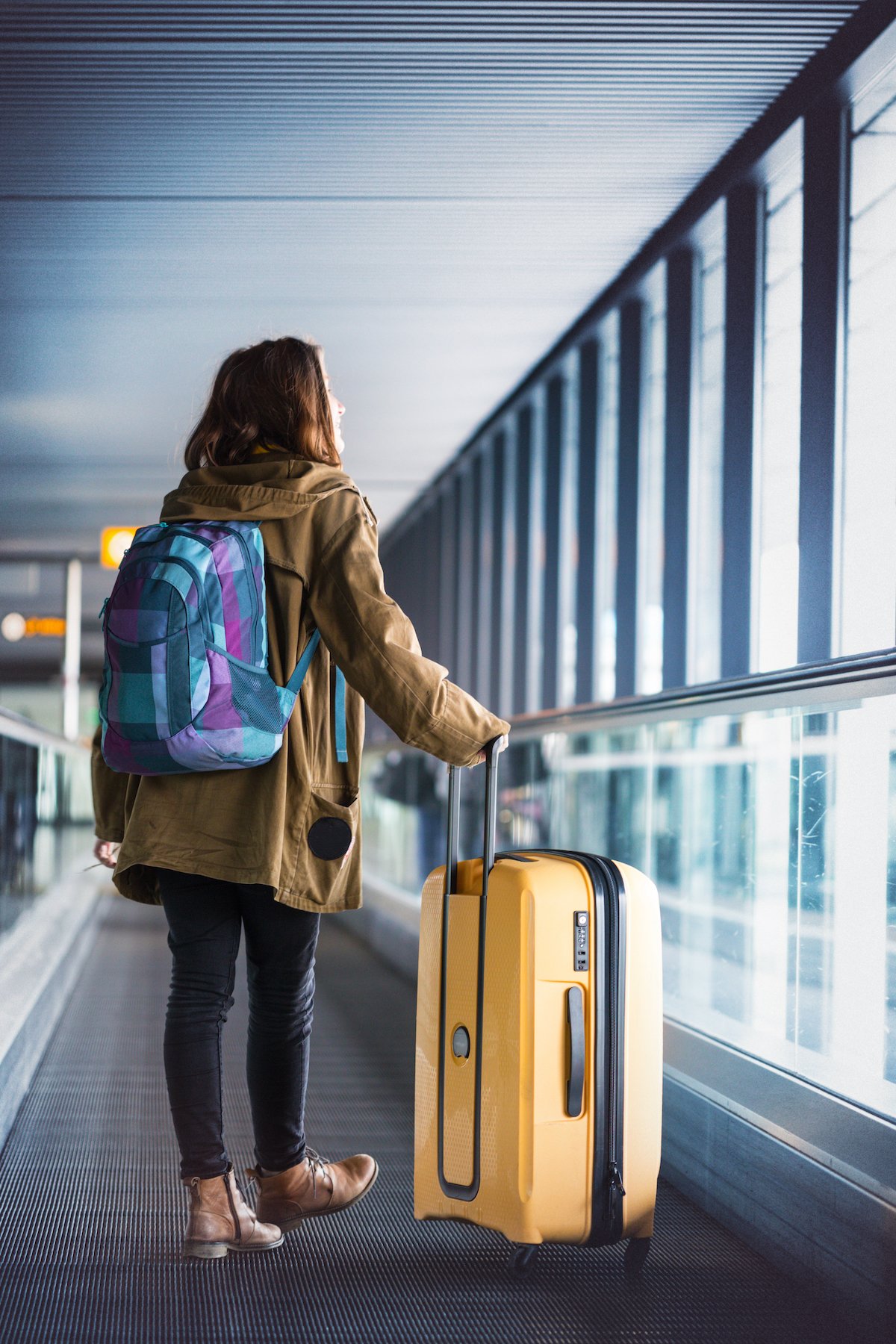19 Tips To Stop Jet Lag From Ruining Your Vacation
Have you ever landed in a foreign country after a six to eight hour flight and feel like you just pulled an all-nighter from your college days? Eyes bloodshot, skin crunchy, mind just…elsewhere…and body aching with stiffness? You are in your exciting destination, but jet lag is breathing down your neck like it's got a vendetta.
Jet lag is the pet name for circadian desynchrony, properly defined as “a sleep disorder in which there is a mismatch with the body’s natural circadian rhythm and the external environment as a result of rapid travel across multiple time zones.”
Simply put: Your external and internal wires have crossed and are now buzzin’ with imbalance and confusion. A common predicament affecting 60-70% of long haul travelers, jet lag symptoms typically worsen the longer the flight and the more time zones you cross.
When it comes to recovery, travelers can typically expect to need one day per time zone change for improvement. So, if you crossed three time zones, it typically takes your internal clock about three days to adjust to your new destination’s schedule.
Most common symptoms of jet lag:
Dehydration
Physical and mental fatigue
Gastrointestinal discomfort, including bloating and constipation
Disrupted sleeping schedule
Disrupted appetite
Low energy and mood swings
Jet lag can be a real drag when traveling, but lucky for you, prevention is relatively simple if you follow these steps to reduce the symptoms.
Before Your Trip
Prevention is the best defense when it comes to the invisible terror of jet lag. Starting one to three days before your trip (depending on the length of your upcoming flight), there are actions that you can take to start off your trip with 100% health.
Take nutrition, hydration, and sleep seriously.
Start slowly moving your bedtime earlier (or later) to preemptively adjust to the new time zone.
Have a high quality meal at home right before you leave so that you don’t load up on overpriced garbage at the airport.
Pack healthy snacks for the flight (because you ain’t finding them at the airport).
Exercise immediately before you head to the airport, so that you are better physically prepared to remain in one seated position for a long period of time. Your body can better utilize flying time to rest after having worked out.
Select an aisle seat when you book. Sitting in the aisle means that you don’t have to be “that person” when your flying buddy is trying to get some shut-eye, you can hydrate to your heart’s content, and you have a clear pathway to spring to the bathroom. You can also get up to stretch easily if you’re on the aisle.
On Board The Plane
Once you’ve boarded your flight, beating jet lag is all about maintaining as much of your natural internal rhythm as you possibly can.
Snooze.
Simply sleeping is one of the best ways to get ahead of common symptoms like fatigue, but choosing to rest over having a movie marathon is not often the most popular choice. Bring whatever accessories help you get quality sleep: neck pillow, eye mask, or ear plugs. You can’t go wrong with getting as much sleep as possible!
(The exception lies in the case that your touchdown is at a decent bedtime and you can go right to sleep. In that case, limiting sleep until you touch down could quickly acclimate you to that time zone.)
Set The Correct Time.
Change your watch to your destination’s time zone as soon as you board the plane. Instead of getting caught off guard by an unexpected time switch upon landing, try setting your watch early. This will sync your brain and body and prepare you mentally for whatever time zone you land in. It may also encourage you to hit the snooze, instead of thinking, “Oh it’s only 6 pm, I can watch a few movies.”
Hydrate.
The first–and the easiest–way to prevent fatigue, body aches, and headache is adequate hydration. It is incredibly easy to become dehydrated when flying without even realizing it. It’s almost like the TSA wants you to be dehydrated with their DUMP OUT ALL LIQUIDS signs as you arrive with a full water bottle. More than that, you lose about eight oz of water per hour on an airplane! Flying in an airplane cabin that has extremely low humidity levels at high altitude is very conducive to dehydration. Tips to increase water intake:
Bring an empty water bottle with you through security, fill it up as soon as you get through TSA, and make it a goal to have it finished by the end of your flight.
Choose tea or other hydrating drinks when the flight attendant comes around with drink selections.
Liquid I.V. Hydration Packets are an easy way to get those happy electrolytes in your body and may even make you more likely to keep sipping water. Or, bring a sports drink.
Don’t be scared to be the irritating bathroom break person. If your seat buddy is giving you the side eye for asking her to move a few times, remind yourself that this is a basic human need.
Limit Dehydrating Fluids.
As diuretics, alcohol and caffeinated drinks not only dehydrate you, they will further disrupt your body’s natural rhythm and give you a buzz (Who needs an energy drink before a flight anyway?).
Move Your Body.
This technique requires creativity when you are buckled into a three-foot square space that you can hardly even shift your butt in for six hours, let alone move your muscles in a healthy way. But you’re in for body aches, decreased blood flow, and muscle stiffness if you don't get the blood flowing every 60-90 minutes. Working out right before you head to the airport will vastly improve your flight since it will allow you to expend any excess energy. After going through security, get in as much walking as you can. (Am I the only one who marches up and down between terminals to get steps in?) Carry someone else’s luggage; take your time walking to and from the airplane bathroom and stretch on your way there.
Choose Healthy Snacks And Meals.
Ah, your “flight snacks” i.e. Starbursts and Raisinettes. What you eat in the airport–and on the flight–will make an enormous difference in how you feel when you touch down. Making sure that you select options with quality, whole ingredients will provide both fiber and nutrients, but you will have to choose carefully if you’re combing through the airport options. Eating greasy or low-nutrient foods immediately before a long flight may make you feel uncomfortable and bloated as your digestion slows down when you sit for an extended period. Electrolytes can be found in salty snacks and carbs, like nuts, while bananas contain healthy fiber and melatonin, which helps your body relax.
Maintain Normal Meal Times.
Can we talk about how some international flights serve “dinner” at 1am while on a flight to South America? Talk about confusing your body and mind! Maintaining your normal meal patterns and times can help keep your body in better shape for when you land. While your stomach may be telling you that you're hungry, you may likely also be sleep-deprived; choosing to rest–as opposed to fueling up with a snack or meal–might be just what your GI system (and energy levels) need.
Turn Off The Lights.
Bright lights are the biggest disruption to your circadian rhythm. Turn off that overhead light, bring an eye mask, and minimize exposure to electronic light, such as your laptop, phone, and movie screen!
Take Melatonin.
Low dose melatonin can help with circadian rhythm alignment. Studies show that taking .5 to 5 mg of melatonin close to the bedtime of your destination can help ease jet lag symptoms.
Download Timeshifter.
Timeshifter is an app that can customize a plan or “advice” using your specific flight information. Frequent flyers really enjoy this one!
When You Land
As soon as you arrive, there are more things that you can do to get over jet lag more quickly.
Plan a chill (read: not over-scheduled) first day or two of travel.
Commit to the new time zone’s schedule for eating and sleeping.
Exercise (especially if you couldn’t do purposeful movement before your flight). Your body is screaming for a good stretch and release after sitting in one position for so long.
Beating Jet Lag
If you do nothing to prevent jet lag, you may pay the price by sacrificing the first day(s) of your work trip or vacation. These above tactics can help you to maintain and restore your body and mind’s natural rhythm more quickly, but they do require intention and effort. With these steps in mind, you can actively prevent jet lag and dive immediately into your first day at your destination!








